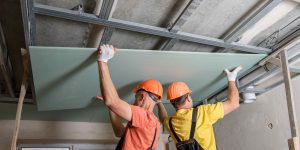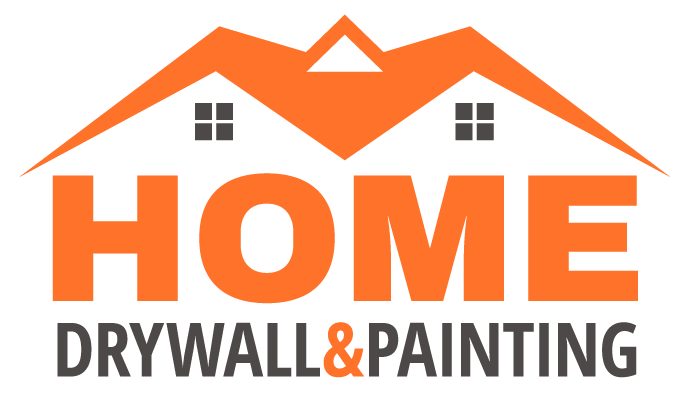 Drywall installation is a skill that takes practice and patience. In this guide, you’ll find tips for installing drywall and information about the most common mistakes people make when installing it. Drywall Installation Near Denver CO
Drywall installation is a skill that takes practice and patience. In this guide, you’ll find tips for installing drywall and information about the most common mistakes people make when installing it. Drywall Installation Near Denver CO
When Should I Install Drywall?
As with most building materials, it’s best to install drywall in a warm, dry environment. This will prevent the paper from warping and cracking prematurely. It’s also important not to install drywall over existing finishes if you can help it—you want the surface of your home as smooth and clean as possible before installation begins.
Because drywall is not an insulating material, you’ll need to be sure that your home’s structure can provide adequate insulation before installing any walls or ceilings. If this isn’t possible, then an additional layer of insulation should be added after installation is complete.
The ideal time for installing drywall would be before any outside work has been done on your home—that way there won’t be any chance of damage occurring during construction or repairs down the line.
Can I Install Drywall in the Winter?
You can install drywall in the winter, but it may take longer for the drywall to dry.
If you don’t have a heat source, you will need to use a dehumidifier to speed up the drying process. You can also use a heater if necessary. The temperature of your room should be between 65-75 degrees Fahrenheit when applying joint compound and 50-75 degrees when applying the skim coat.
How Long Does it Take to Install Drywall?
The amount of time you’ll need to complete your drywall project depends on the size of the area you are working with and how many sheets of drywall you’re installing. In general, a single person can install a small bathroom in one day or two if they have plenty of help. However, if your project involves more than just one room or is more complicated than a standard installation, you may want to consider hiring drywall professionals for assistance.
If you are planning on doing some patching work after installation is complete, plan on spending another week or two depending on how much work needs to be done and what type of materials are being used.
How Much of a Gap Should There be Between the Floor and the Bottom Edge of Drywall?
To ensure that your new drywall installation is effective and long-lasting, it’s important to get the details right. One detail, in particular, is the gap between your floor and the bottom edge of the drywall.
The ideal gap is 1/4 inch, with no more than 1/8 inch above or below that range. Any less than this can cause mold growth or drafts, while any more could cause water damage and lead to further problems down the road. If you’re unsure how much space to leave (or if you don’t want to learn) consider hiring a professional to help with these tasks! You’ll also want to make sure there are no gaps in insulation—this can lead to drafts as well as major energy loss through poor insulation properties.
When installing drywall in a weather-controlled environment like an attic, be sure not to install anything until all temperatures have stabilized at over 50 degrees Fahrenheit for three days straight without any precipitation predicted during those days either. Otherwise, moisture may build up within your home before drying out completely again by itself.
Should I Have a Vapor Barrier Installed?
The answer here depends on a few factors, including what you plan to do with the walls and whether or not you have insulation.
If you’re planning on painting over the drywall, there’s no need for a vapor barrier since the paint will protect against moisture. If you’re planning on installing wallpaper or other non-paintable wallcoverings, it’s best to use a vapor barrier because these materials won’t prevent water from seeping into your home.
What’s the Standard Size for Drywall Sheets?
The standard size for a drywall sheet is 4×8. There are also 4×10, 4×12, and 4×16 sheets. The 4×8 1/2″ size is a little smaller than the standard one; while it’s still called “4 by 8″ its actual dimensions are 3 3/4″ x 7 3/4”. This smaller size can be useful in certain situations where you don’t want to cover up your wall studs with more material than necessary.
There are also many custom sizes available for special applications such as ceilings that have unusually large spans or other odd-sized rooms like those found in older homes with cathedral ceilings or basement areas with exposed beams and joists that need covering up before painting can begin.
What is the Proper Spacing for Nails When Hanging Drywall?
Nail spacing is determined by the type of fastener you use. For nails, it’s 16″ and for screws, 2″.
If you’re using nails and your sheets are smaller than 12′ wide, you can space them every 24″. If they’re larger than 12′, then spacing should be every 26″. This will help ensure that your walls are joined tightly enough to prevent sagging over time.
Call a Professional Contractor
If you’re not sure about any of these answers, call a professional contractor. Pros have the experience to know the right answers and can help you make sure you are doing it right. They can also save you money by doing it right.
Drywall Installation Near Denver CO
Drywall installation is a complex process that requires careful attention and patience. A lot of the questions surrounding drywall installation can be answered by knowing how to do the job properly. If you have any additional questions about drywall installation, feel free to contact the professional contractors at Home Drywall and Construction in Denver, Colorado today.
